GoToMyPC’s limited trial, even for non-commercial users, is a common reason why people look for free alternatives. It has other downsides as well, such as the need to log in with your own account on the remote computer, making it less useful for support. We’d like to present some alternative apps, such as HelpWire, that address the pricing and other issues with GoToMyPC.
HelpWire
HelpWire requires minimal time both to set up and to start a session, and with the use of the Quick launcher, needs neither the host nor the client to log in. It’s currently free with no strings attached. HelpWire performs excellently on high-latency and low-bandwidth networks that are commonly encountered in customer support. Every facet of the application is designed for support work, including detailed customer management and the ability to create teams with distinct management roles.
Interaction with the host system is comprehensive, with both clipboard access and file sending being available. Unattended access is possible, making HelpWire useful for access to a personal computer from anywhere. Most importantly, HelpWire is available on all popular desktop platforms with full cross-platform support, making it the best GoToMyPC alternative.
Platforms: Windows, Mac, Linux.
Pros
- Great performance;
- Full range of interaction with the session host;
- Management features.
Cons
- No mobile versions.
How to Start a HelpWire Remote Access Session
-
Download the HelpWire Quick app on the computer that will connect to the remote session.
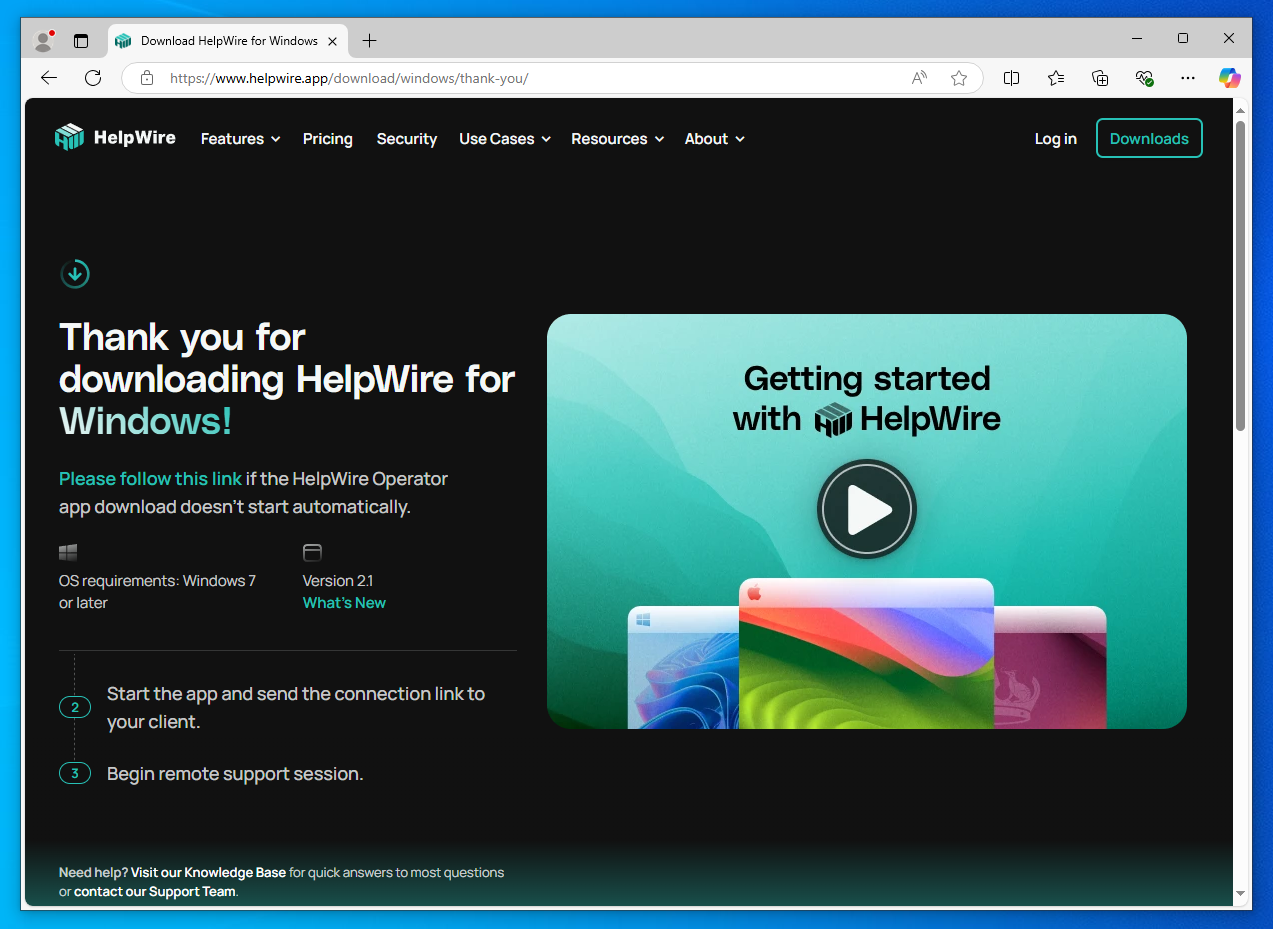
-
Start HelpWire Quick and send the provided URL to the session host computer.
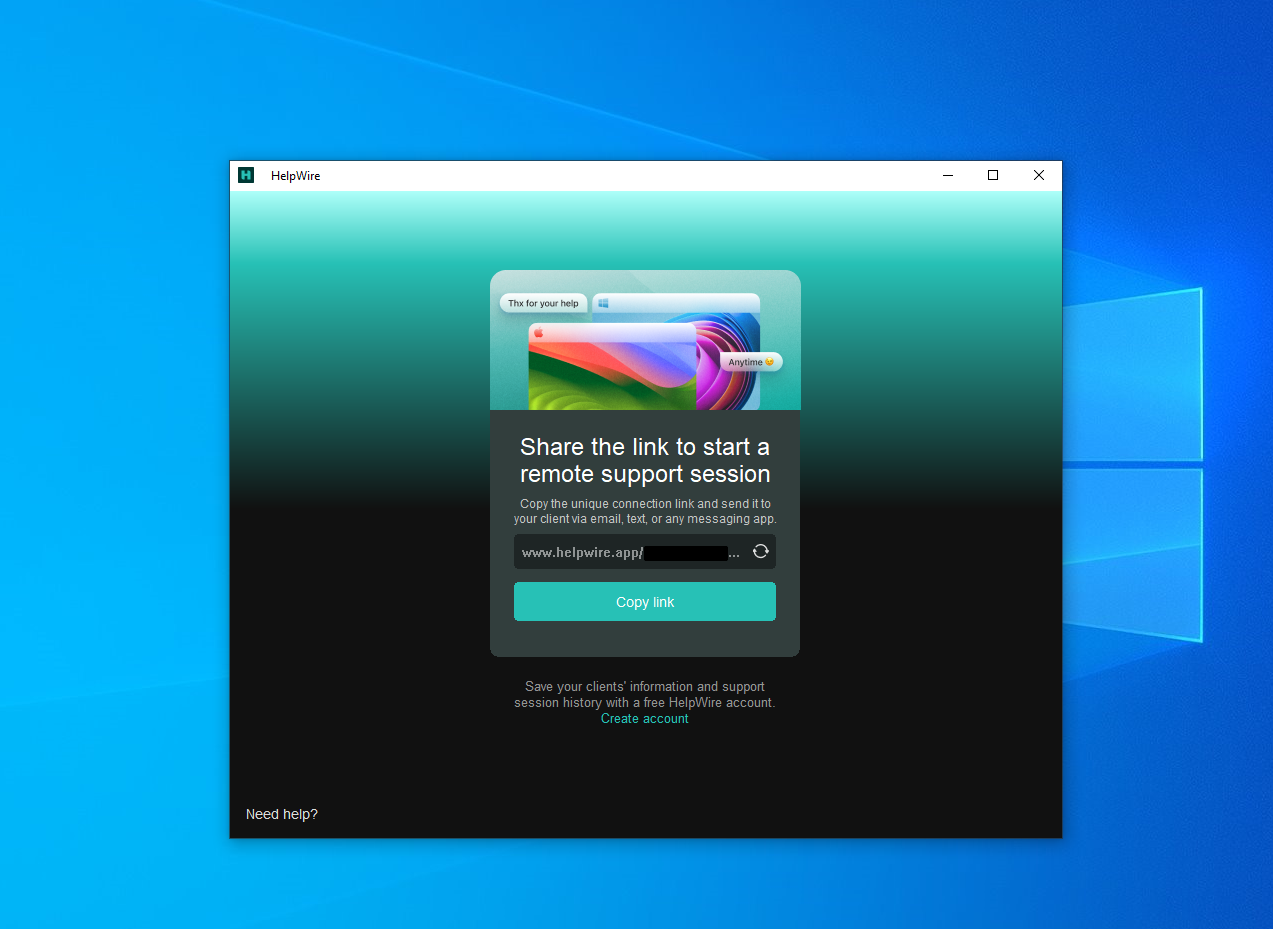
-
On the host, visit the URL and run the downloaded HelpWire build.
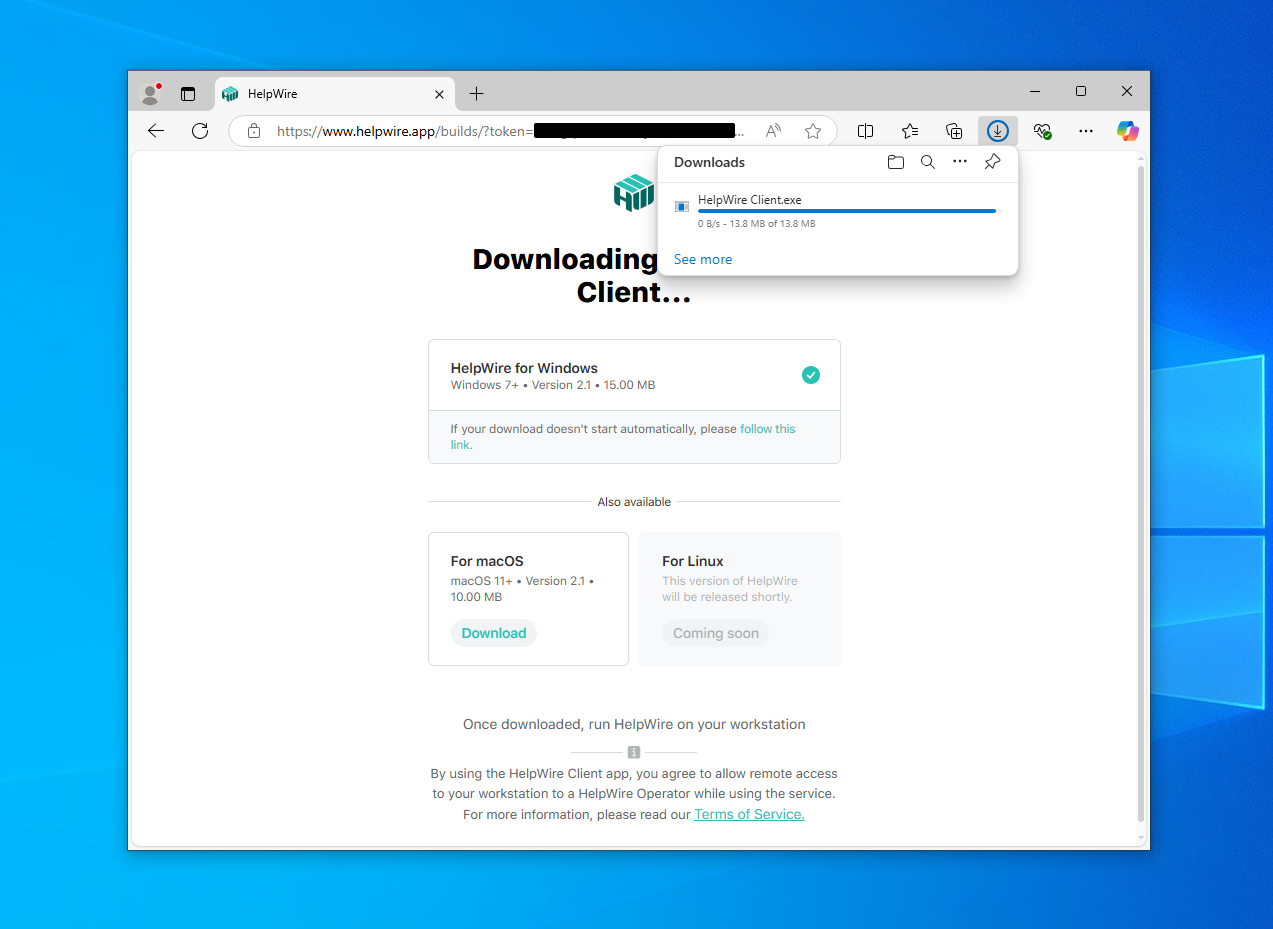
-
Grant access when requested to start the session.
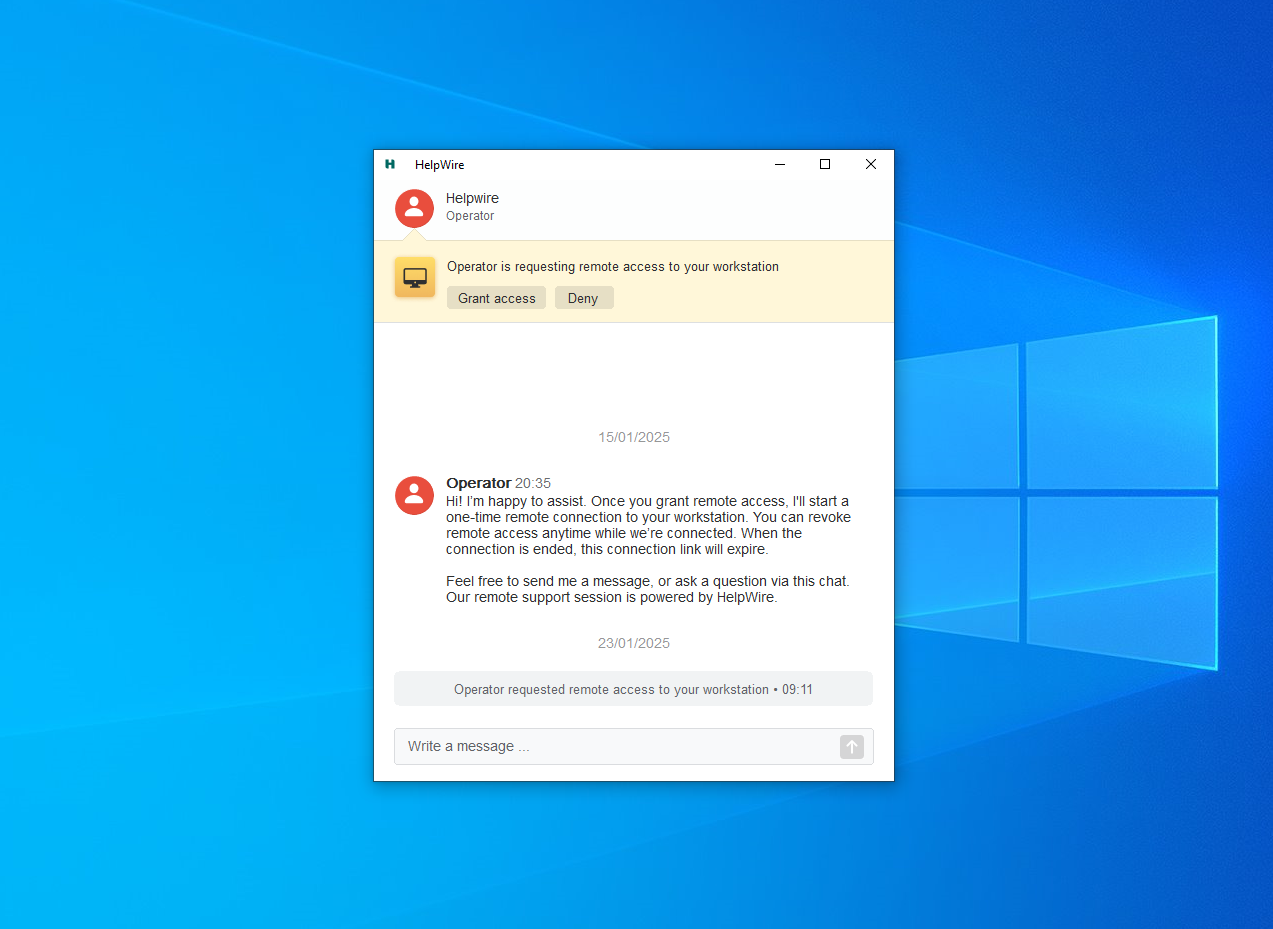
In order to manage connections, make notes, and access other settings, it’s recommended that you create an account on helpwire.app and use the full application.
TeamViewer
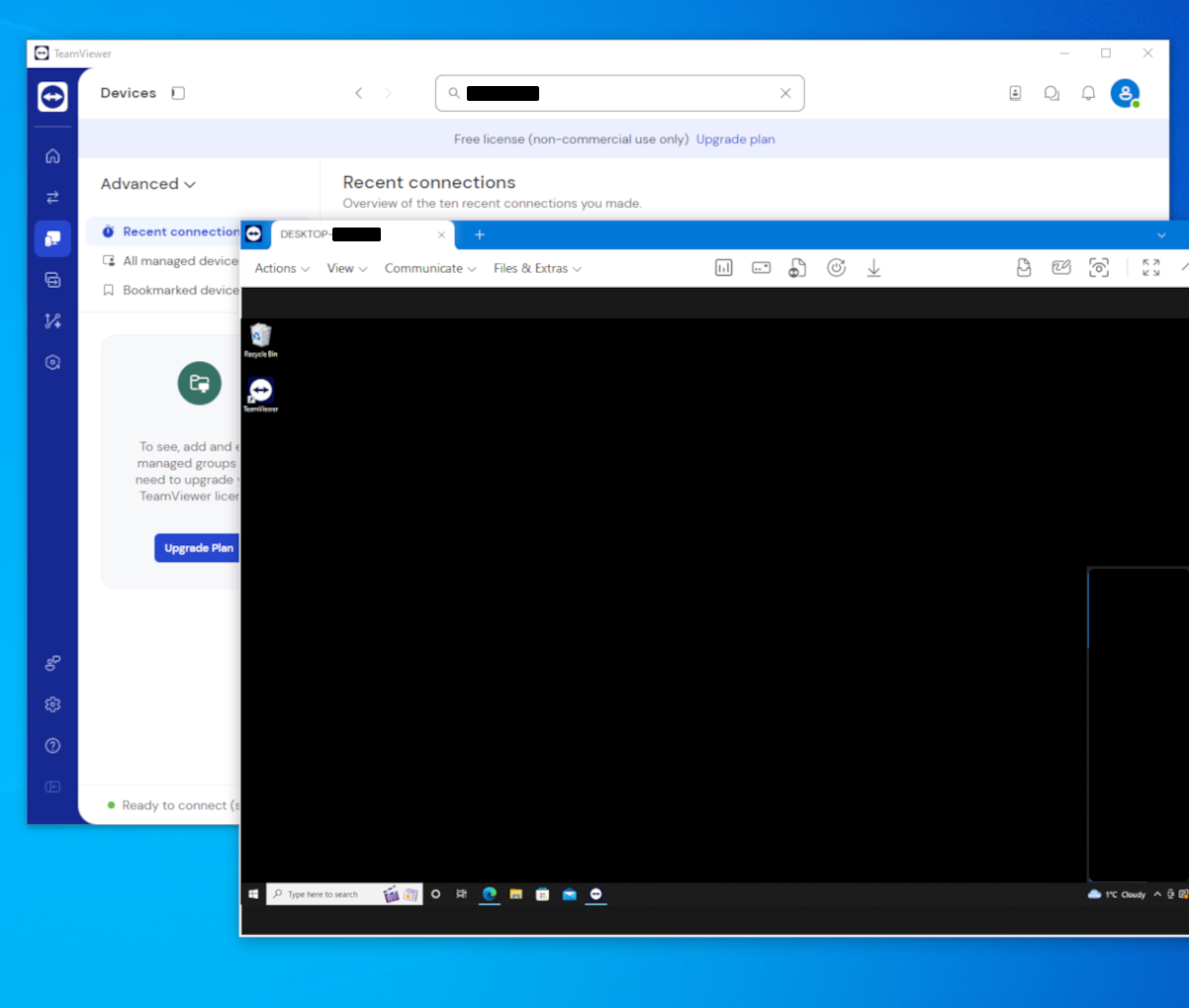
TeamViewer is a popular choice for free remote access. The session host does not need to be logged in, and only a code and a password need to be exchanged with the connecting user. The latency is low and the variety of features is broad, including remote reboot, clipboard settings, and hotkey sending. The performance is decent, even under low-bandwidth conditions. However, the client does need to be logged in, and approve their device through an email, making the time to start a session a lot longer.
There is no stated trial limit, but that comes with a downside: TeamViewer uses an algorithm to determine whether it’s being used commercially. The results are often unpredictable and not entirely fair. While it’s a useful option, TeamViewer is not reliable for a free, non-commercial trial user.
Platforms: Windows, Mac, Linux, Android and iOS (not for free users).
Pros
- Many ways to interact with the host computer;
- No time limit on trial.
Cons
- The trial can end unpredictably;
- Client computers always need to be added to trusted devices.
AnyDesk
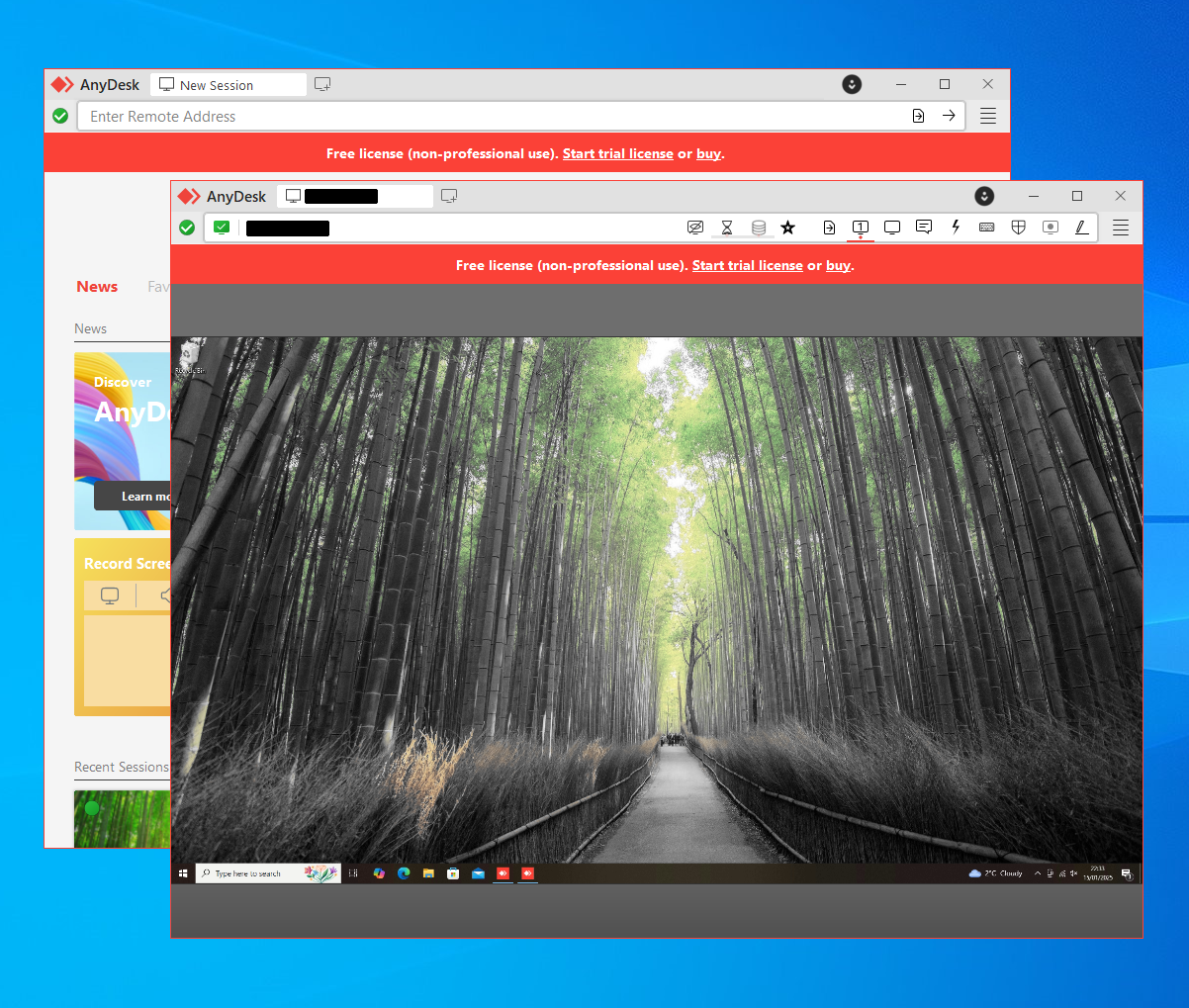
AnyDesk is provided for free for non-commercial use, with false positives being possible like TeamViewer. Neither the host nor the client need to log in to start using it. The amount of security settings is high, with the ability to individually disable access to the file manager, computer restarting, or sound. Clipboard can also be shared, but we didn’t manage to get drag-and-drop copying to work.
Connection is easy, done with an identifying code, but that’s when the problems start. With the same setup as other applications, AnyDesk performed noticeably slower, with delays sometimes being several seconds long.
Platforms: Windows, macOS, Linux, Android, iOS, Raspberry Pi, Apple TV, others.
Pros
- No login required;
- Plentiful access options.
Cons
- High delays;
- Can end the trial if commercial use is suspected.
Chrome Remote Desktop
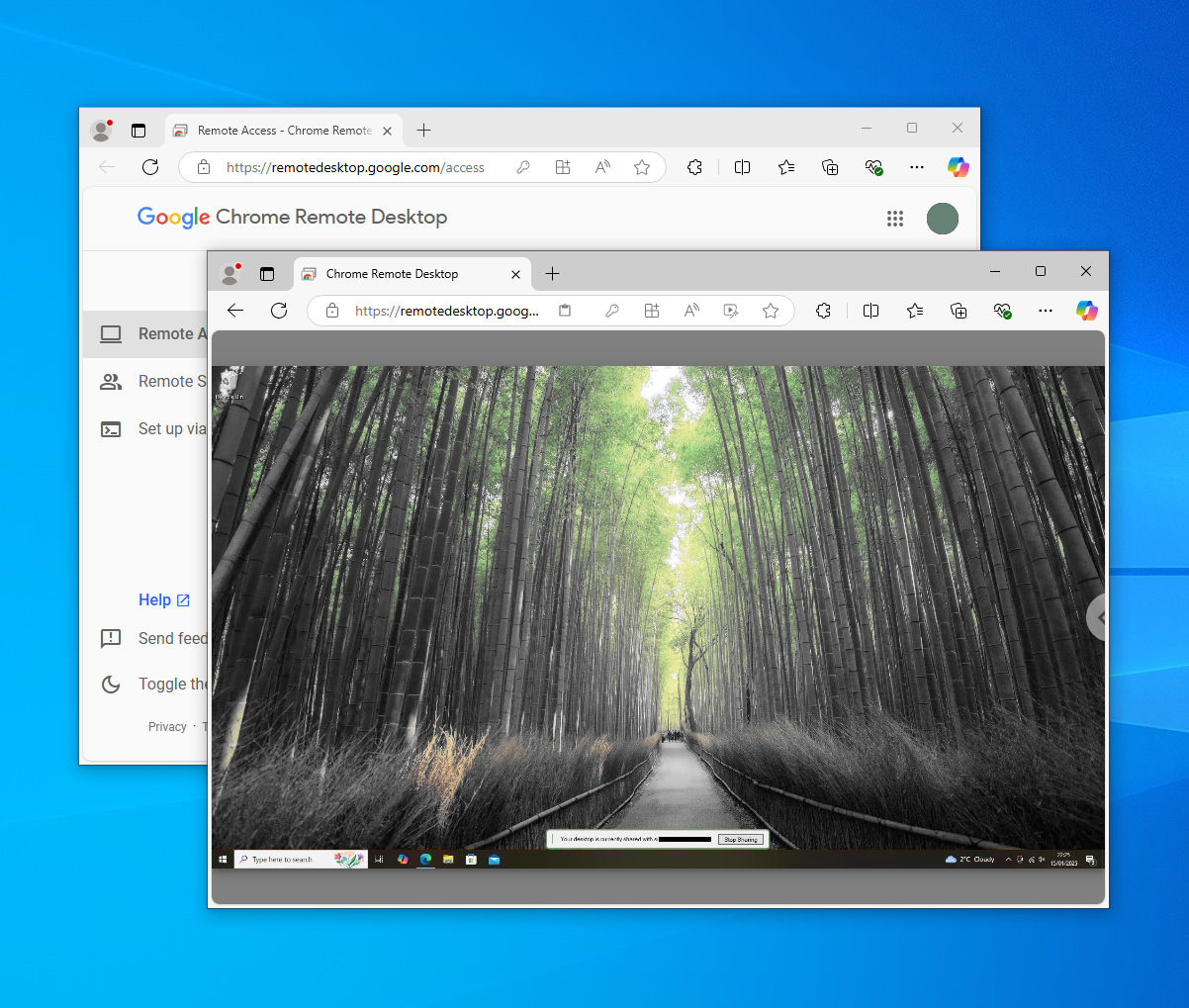
Chrome Remote Desktop is a Google service, meaning that both the host and the client need to be logged into their respective accounts. Contrary to the name, it can be installed in other browsers, such as Edge. Generally, it’s slow to set up, needing to be installed despite being a browser add-on.
The performance is generally good, with options for FPS limiting, resolution, and even the video codec. Clipboard is shared, but file transfers are not available. Chrome Remote Desktop is a reasonable option for those that don’t need the extensive features of other remote access services.
Platforms: Windows, macOS, Linux, Android, iOS.
Pros
- Good performance with options to optimize;
- Truly free and not restricted to personal use.
Cons
- No file transfers;
- Both users need to be logged into a Google account.
Splashtop Personal
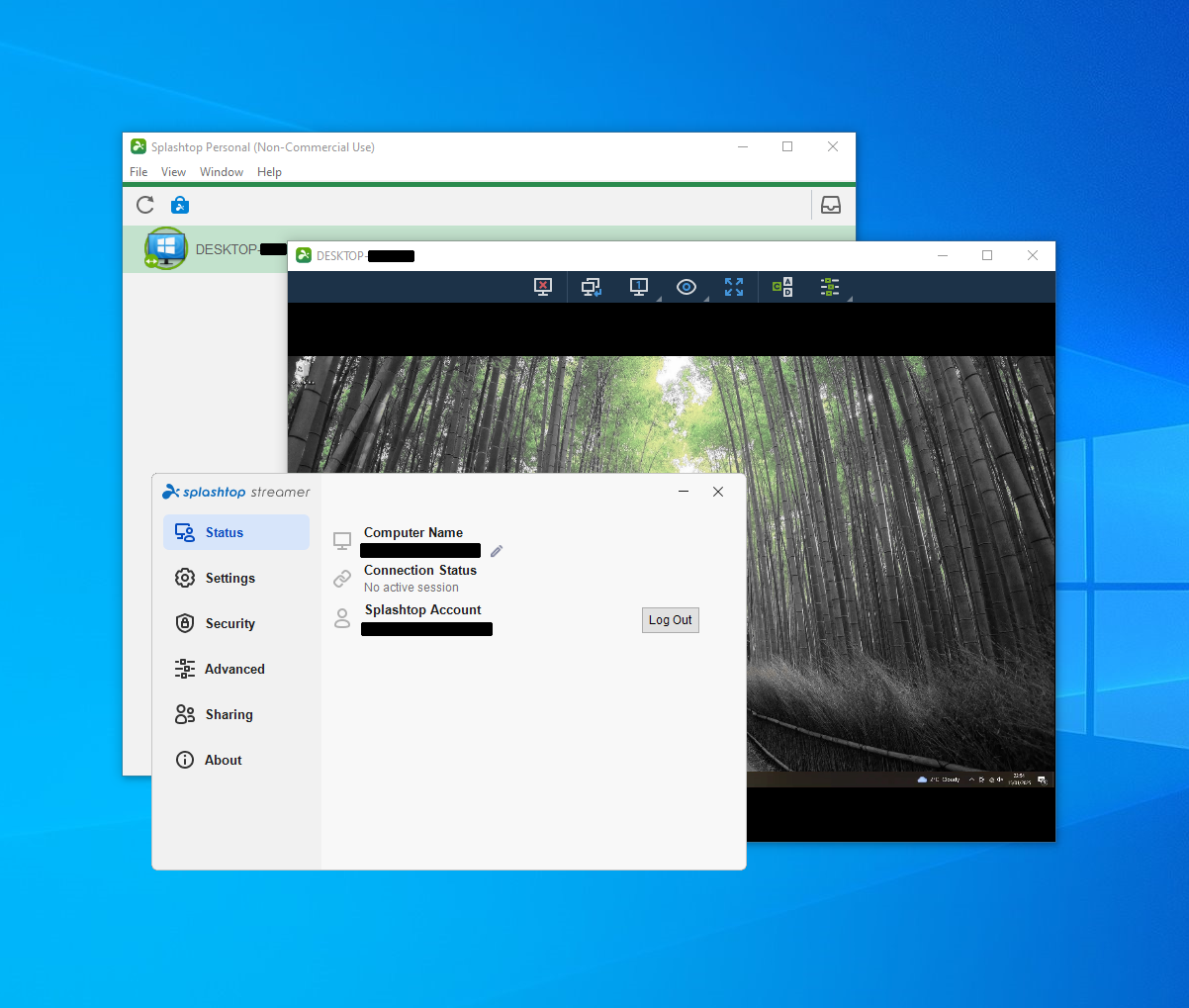
Splashtop Personal is a limited version of the enterprise-oriented Splashtop apps. It might be difficult for a novice user to set up, since the download page displays many different versions of the app, but also requires them to choose between the client, used to connect to sessions, and the Streamer, used to host them. In addition, both apps need the user to log into the same account, which is problematic for support needs, same as GoToMyPC.
Drag-and-drop functionality did not seem to work, although clipboard did. After testing the app with the same setup, the mouse seemed jittery and slightly delayed in comparison, especially when the window size is reduced.
Platforms: Windows, macOS, Android and iOS (access only).
Pros
- Does not check for commercial use, preventing false positives.
Cons
- May be difficult to set up for a new user;
- Credentials need to be shared to start a session;
- Mouse jitter.
FAQ
AnyDesk and TeamViewer provide either one or both of these features in the free version.
HelpWire has an incredibly simple setup process, only requiring the user to click a link and open the downloaded file.